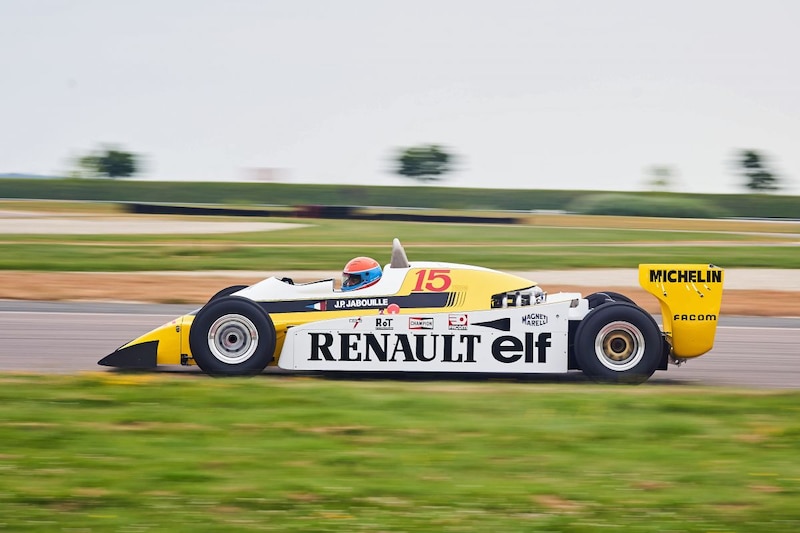

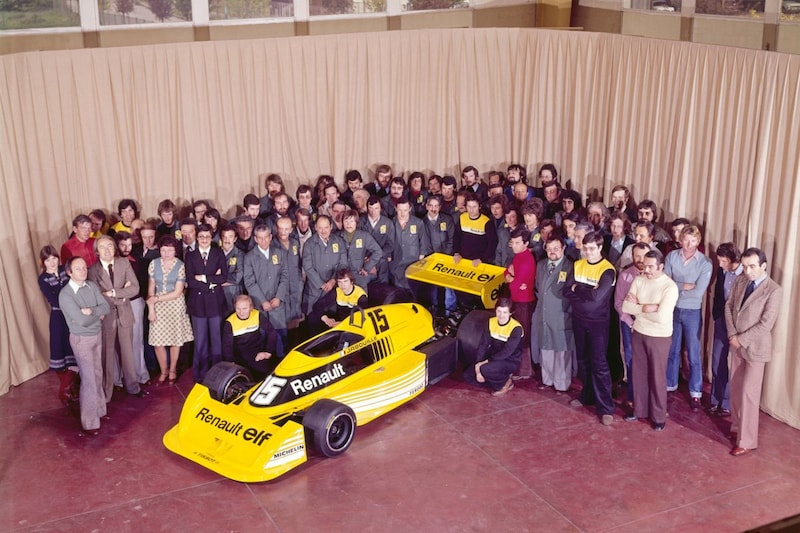

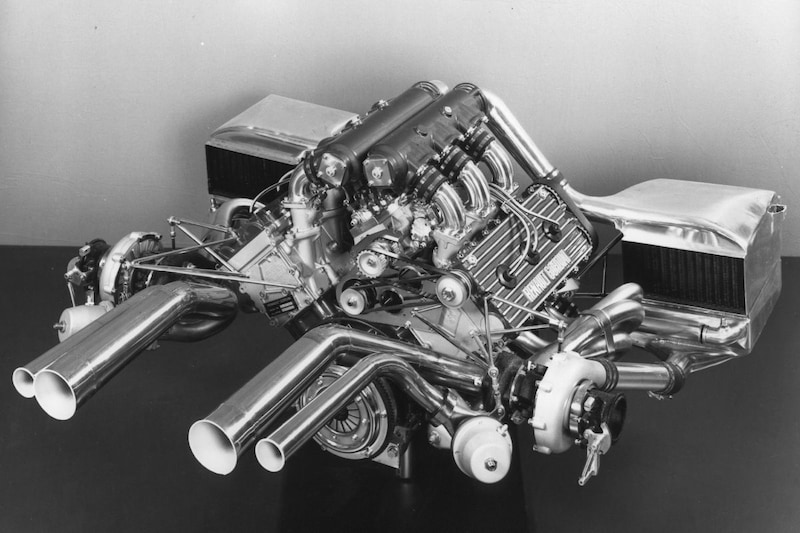

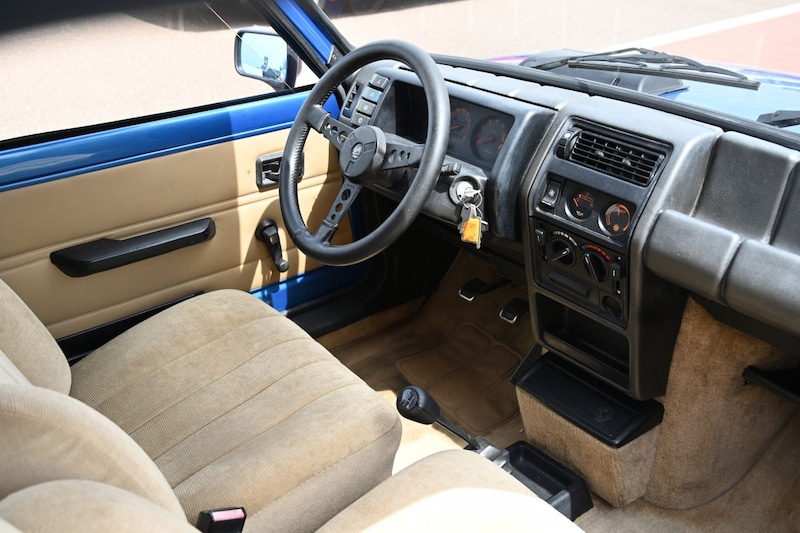
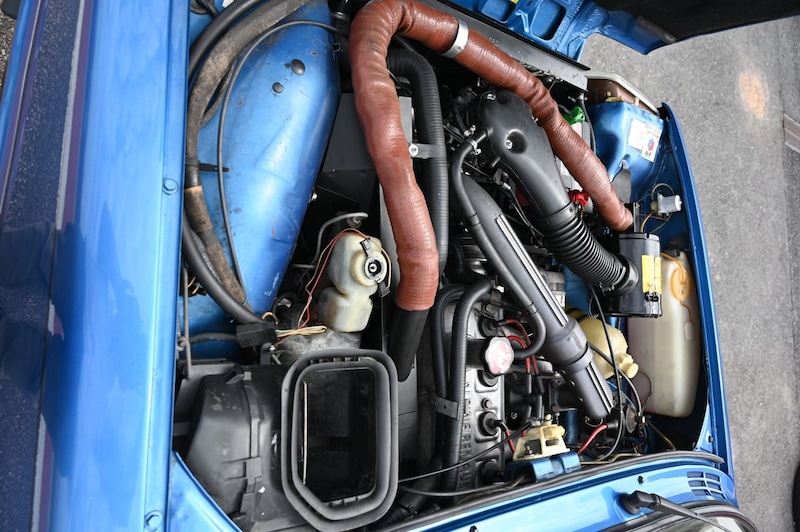
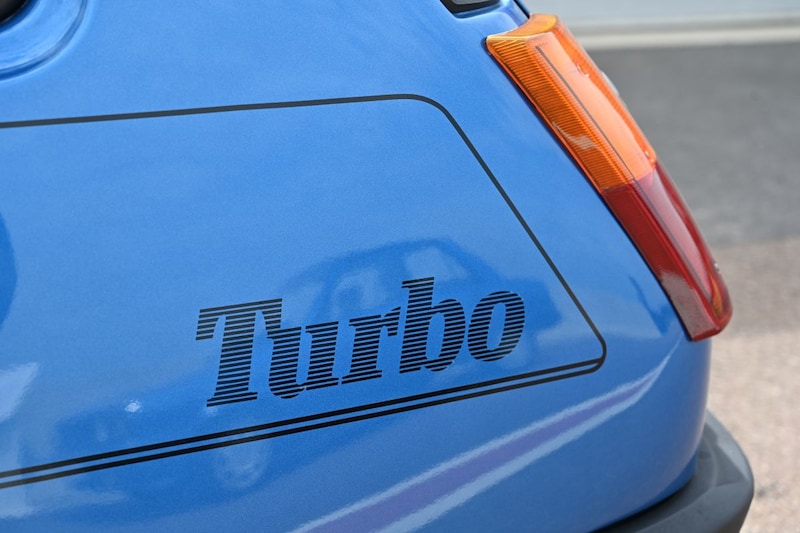
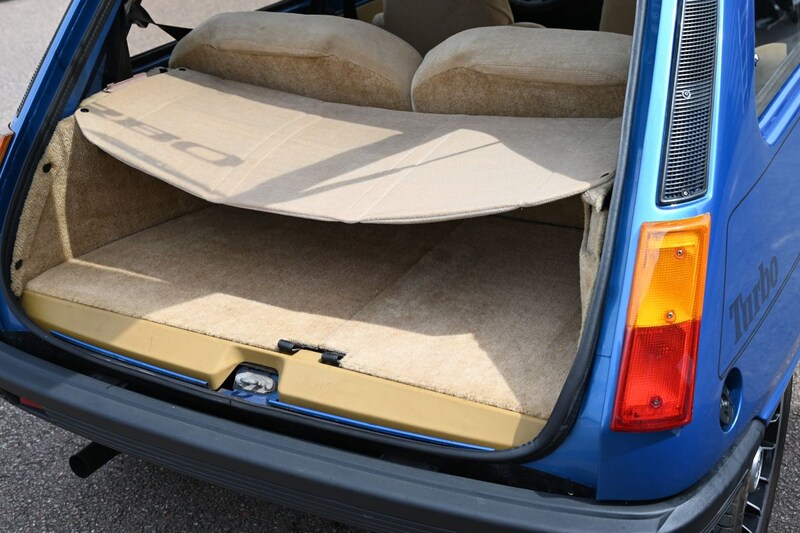

In 1979 Renault achieved its first Formula 1 victory with a turbo engine. It marked the start of a new era. Not only in motorsport, but also on public roads. On board a Renault 5 Alpine Turbo from 1981, we relive old times.
The history of the turbo at Renault goes back much further. It is Louis Renault, the founder of the brand, who already applied for a patent on December 17, 1902 for the principle of the turbo: increasing the inlet gas pressure in an engine by means of a fan or small compressor to increase the efficiency of the engine. optimize. On March 28, 1903, he was granted this patent for a period of 15 years. Despite the use of the principle on diesel engines in locomotives and trucks, the turbo at Renault only really debuted in the early 1970s. Driver Jean-Luc Thérier triumphs in the Critérium des Cévennes with a turbocharged Alpine A110 Group 5. The response time (turbo lag) is enormous and that is one of the challenges to be able to apply the turbo engine more widely. The next step is the sports prototypes for use at Le Mans. In 1975, a turbo engine was used for the first time, which was further developed until the victory at the 24 Hours in 1978 by Jean-Pierre Jaussaud and Didier Pironi.
Daring, but not overconfident, Renault takes the next challenging step: the launch of a 1.5-liter turbo engine in Formula 1. The development of this small V6 Renault Gordini also starts in 1975. The development and construction took place immediately in Viry-Chatillon close to Paris, where the brand’s F1 engines are still made today. Of course, operations are carried out there under the wings of Renault Sport.

Renault Formula 1
Everything was new
Renault makes its first appearance at the 1977 British Grand Prix. Driver Jean-Pierre Jabouille has been involved in the development of the engine and the car from the start. “The engine was the biggest challenge in the beginning as well as the aerodynamics. Little was done at that time with the optimization of the air conduction. I became so familiar with it that the aerodynamics specialists at Renault asked me for input. You have to imagine. that everything was new at Renault in Formula 1: the engine, the chassis and also the Michelin radial tires we drove with. Little by little we managed to improve all these elements, “recalls Jean-Pierre. And that eventually led to Jabouille’s first turbo victory at the Grand Prix at the Dijon-Prenois circuit in 1979. And it grew quickly. Renault achieved a total of 177 victories and 507 podium places with its turbo cars. The car from forty years ago was already equipped with two turbos at the time. Jabouille: “As a result, the power was better distributed over the revs. The first Renault F1s only delivered their full power on the straight.” Jabouille crashed at the Canadian Grand Prix in 1980. “I was stuck in my car for half an hour. You can see from the RS10 here that drivers were very far in the front of the car at the time. I broke a leg and that marked the end of the race. into my F1 career. “
Technology transfer
At the same time as the success in motorsport, turbo technology was being prepared for launch on normal production models. There is no more convincing example of the transfer of techniques from motorsport. This also applies today. For example, a derivative version of the energy management system of current F1 cars will soon be launched on Renault’s hybrids and plug-in hybrids. Meanwhile, the majority of cars that are sold new are equipped with turbo engines. But Renault was one of the pioneers some forty years ago. This resulted in an illustrious series of cars with which we could get acquainted again. This series was preceded by the launch of the Renault 5 Turbo concept car, unveiled at the Paris exhibition in 1978. Two years later, the first turbo-charged Renault for use on public roads was a fact.
Renault 5
Affordable sportsmanship has always been of paramount importance to Renault. Cup versions for brand racing were derived from ordinary production cars. This is also the case for the 5 Alpine, which appeared in 1976 and was equipped with a turbo from the end of 1981. In 1972, Renault amazed the world with the three-door R5. A compact car with a length of only 3.5 meters. The little one combines a surprising amount of interior space with an adult driving style and modern elements such as plastic bumpers. In fact, all current B-segment cars still follow the example of that primal Renault 5. Soon a brand race is set up around this popular hatchback. Briefly with the 956 cc TL version, soon followed by the LS and TS with a 1,289 cc four-cylinder. These also do not remain in use for long and are followed in 1976 by the 5 Alpine. A car that has been further developed, not only in the field of drive technology, but also through chassis tuning and body reinforcements.

Renault 5 Alpine Turbo
Monte Carlo
On the circuit during the cup races, but also in rallies, including that of Monte Carlo, the Renault 5 makes its mark. When the entire series gets a facelift in 1979, the naturally aspirated 5 Alpine remains in the program. Shortly after the first turbo victory in Formula 1, Renault is integrating sporty turbo versions into the normal delivery program. The Renault 5 Alpine is the turn at the end of 1981 and from that moment on as a 5 Alpine Turbo. Just like the naturally aspirated version, there is a 1,397 cc power source under the hood. A copy from the well-known Cléon family that was launched as a 1.0 liter as early as 1962 and remains in use in various cylinder capacities until the 1990s. The addition of a Garrett T3 turbocharger immediately has a huge impact on performance. The power increases from 93 to 110 hp and the torque achieves a gain from 114 to 147 Nm at the same speed. The top speed gains 10 km / h and the acceleration to 100 km / h dips under ten seconds.
Cibié spotlights
Due to the larger front bumper, the 5 Alpine (Turbo) measures a few centimeters more in length. This is necessary to accommodate the five-speed gearbox placed in front of the engine. Of course, the track has been widened for better handling and the car is standard on alloy wheels, just 13-inches in size with hefty 155/70 HR 13 tires for the time. The blue copy recently bought by Renault Classic is on 175 / 60R13. The metallic paint is called Alpine Blue, how could it be otherwise. But there are many shades of blue that have passed through that description over the years. The changes to the exterior after the addition of the turbocharger are extremely minor and are limited to five mentions of the word turbo. Nameplates can be found on the grille and on the right side of the tailgate, while Turbo stickers appear on the rear fenders where A5 used to be. For the purists: A5 stickers still adorned the rear fenders in the first copies. The latest addition Turbo is written in large letters on the rear window, just like the ‘thick’ R5 Turbo. The black front bumper has been extended since the launch of the 5 Alpine in 1976 to accommodate, among other things, yellow Cibié spotlights.
Spectacle
Time to get in. Let’s see what this little turbo has to offer. Also in the interior there are no immediately visible changes compared to the atmospheric 5 Alpine except for the addition of a turbo pressure gauge on the center console. In this case, the furniture is covered with beige rib velor. The seats have narrow backs with lumbar supports. That looks good, but does not provide any support for the shoulders. The perforated three-spoke steering wheel is covered with leather and behind it is a set of instruments with a rev counter with numbers in red. The rear seat can be folded in two parts. Instead of a parcel shelf, a piece of upholstery fabric has been stretched above the luggage. That looks chic, but will ‘hang’ over time.

Renault 5 Alpine Turbo interior
After turning the ignition key, the spectacle begins. The power and torque are not enormous by today’s standards, but the car weighs only 844 kg. The 1.4-liter sounds distinguished by its exhaust. Immediately after driving off we keep an eye on the turbometer, but it takes quite a while before it starts moving. Only at 3,000 rpm does Jaeger’s instrument swing to the right. And only if you accelerate even more from that moment on, you will notice the supportive feeling in the capital accumulation. Although a turbo can significantly improve the performance of an existing engine, you still have to work the old-fashioned way in the 5 Alpine Turbo. Because the compressor is only active over a limited speed, it is very worthwhile to keep the speed level with the manual five-speed gearbox. That means a lot of switching. The much thicker torsion bars of the suspension compared to the modal fives ensure a stiffer tuning, but the carriage still leans nicely in bends. Power steering is missing and that makes such a Renault 5 Turbo a playful, sporty little one that takes some getting used to, but that always leaves good memories behind. Also with us.